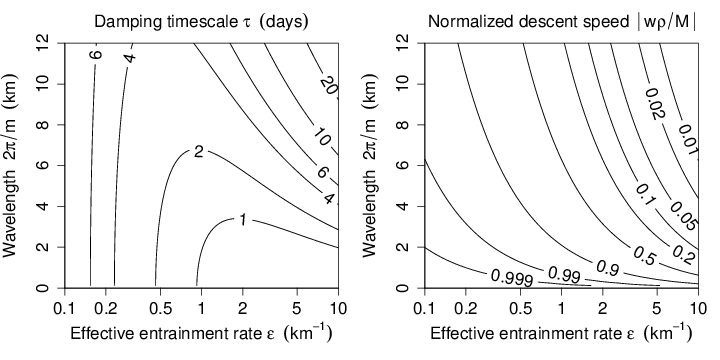Romps, Rayleigh damping in the free troposphere, JAS, 2014
Paper
Description
In toy models of the atmosphere, "Rayleigh damping" is used as a sink of kinetic energy in the free troposphere. Rayleigh damping accomplishes this by imposing a frictional drag on the wind to damp it to zero on a fixed timescale, which is usually chosen in the range of 1 to 10 days. The use of Rayleigh damping is justified by claiming that moist convection is the physical process responsible for this drag. Indeed, it is known that convection can damp winds -- the process is referred to as "cumulus drag" -- but the appropriateness of modeling it as a Rayleigh drag has not been investigated.
In this paper, analytical expressions are developed for the effect of convection on wind profiles of different vertical wavelengths. It is found that, unlike Rayleigh damping, convection damps different wavelengths with different timescales. Furthermore, convection causes different wavelengths to descend with different speeds. In summary, long wavelengths damp and descend slower than short wavelengths.
The damping timescale and descent speed (normalized by convective mass flux) predicted by the theory as a function of entrainment rate (x axis) and vertical wavelength of the wind profile (y axis). Note that wind profiles descend slower than compensating subsidence, and the damping timescales are in the range of 1 to 10 days.
